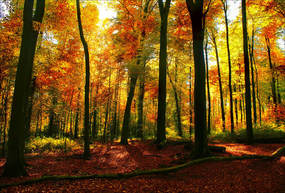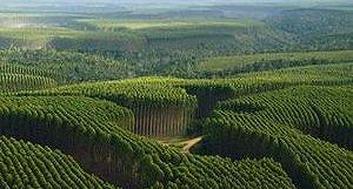First, I must admit, I am primarily focusing on public forest lands. Individuals and corporations that own forested lands, obviously, have the right to manage to meet their goals, which will obviously focus on profitability. This is the reason the management of public forested lands will become ever increasingly important, with the passing of time. Remember, we have already lost over half of the acres of forest cover that once occupied the land base of our planet and, the expanding world population will intensify the demand to clear forested acres for food, shelter and other human needs.
Since the 1960’s, there has been a great deal of pressure, from folks that support the principles of “Preservation”, which has resulted in significant reductions in timber harvesting on the 193 million acres of National Forest System lands. Don’t get me wrong, I am not suggesting we need to increase harvesting of forest wood products but, I believe it indicates a lack of management and degradation of forest community health. Shifting management responsibilities to nature is no longer an option. With our expanding population, proper management of our remaining public forestlands is essential but, requires major adjustments. I just cannot accept tree farming as a desirable management process for public lands, particularly when they almost always involve non-indigenous species. I am reminded of Peter Walenben’s book, “The Hidden Life of Trees”, where he describes how the social life of plant communities is destroyed when we domesticate plants by converting them to row-crops for the production of food. The same thing happens to trees when we grow them in nurseries, and plant them as row-crops in plantations. Forest management is certainly, much more than a simple agricultural process. Individual forest stands are complex living communities with a multitude of organisms, going about their daily duties required to support the relationships that sustain the many life systems on this planet.
We recently made a trip to Michigan where we had the opportunity to observe acre after acre of non-indigenous plantations, visible from the inter-state highways through Ohio and Michigan. Most were Norway Pine, Austrian Pine, Scotch Pine or Colorado Blue Spruce. A few, I am sure, were planted for Christmas tree production and have out grown their use. Some were on private lands where they may be meeting the land owner’s goal but, the majority were on public lands following clear-cutting operations or regenerating abandoned agricultural lands. I was reminded of feelings I have had, when walking through these plantations, feelings of a dark dense enclosure where life has disappeared or is dying. Everything is in orderly rows, uniform size, deadly quite and I feel alone in a biological dessert.
A couple weeks before our Michigan trip, we took a leisurely drive through southwestern Virginia and northwestern North Carolina where we were treated to a very different experience. Several people told stories about how their ancestors passed on pictures and tales of how the mountainsides were mined for the timber required for homes, farms and communities. Pictures from the 1800’s presented a devastating vision of the mountainsides nearly void of the larger hardwood trees that once existed. I call it the Extraction Period. The United States population was only 11% of our current population and the science of forestry was non-existent, so the barren land was ignored and nature was allowed to do the job of reforestation. Today, we observe second growth central hardwood stands of indigenous species exhibiting similar diversity to the original old growth. Since the physical site properties have not changed much and local seed sources were relied on, it is fortunate that today’s communities are very similar to the original forest communities. Yes, there is an occasional conifer plantation but, they are the exception not the rule. The major changes we did observe, were the increased population density and significant increase in the number of people living in the area. Our country has gone from 3.8 million in 1790 to 330 million today, and human impacts on the natural world, have grown to the point nature can no longer do the job without help. If our natural world is to continue to provide the life sustaining elements for our future, it will require human assistance which means proper management, far more intense than previously provided.
I see an exciting future for natural resource managers! Are we able and willing to accept the challenge? NATURE’S WAY requires reading the land, identifying the forest communities, preparing scientific management objectives, prescribing management treatments to encourage diversity and copying natures regeneration processes using local seed sources. To put it a different way, the ecological concerns and considerations must out weight the demand for what we can take from the forests. What path will we choose, spirituality and balance or materialism?


